A Look at 3-Dimensional Scandinavian Art
Each Nordic country has its own set of bronze heroes, reflecting its history and culture.
-
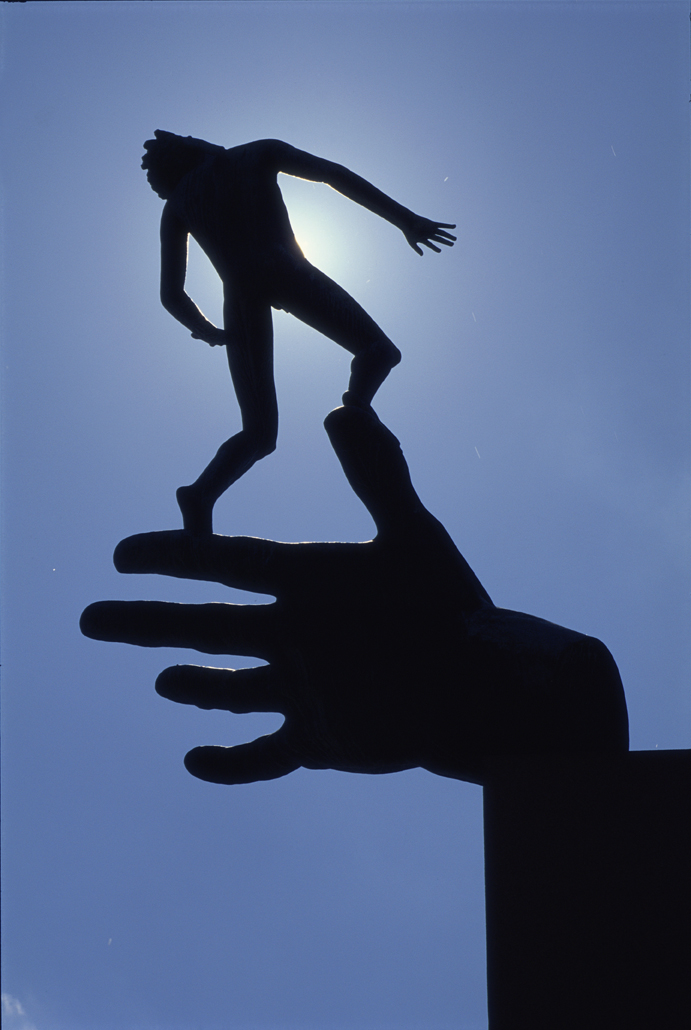 Carl Milles statue, Stockholm
Carl Milles statue, Stockholm -
-
From extensive travel and a propensity for photographing statues and sculptures, I have accumulated quite a portfolio of Scandinavian three-dimensional art. Each country, as expected, has its own set of bronze heroes, reflecting its history and culture. Iceland, appropriately, puts Leif Eriksson on a pedestal; Sweden, with Charles Xll pointing a commanding finger in the direction of Russia, still dreams of a supposedly more glorious past; Finland, after some 80 years, hears the world applauding as Paavo Nurmi, now frozen in action, wins his ninth gold medal in the Olympics.
-
 Voodooo in the Kingdom of Glass; prominent Swedish glass designer Kjell Engman.
Voodooo in the Kingdom of Glass; prominent Swedish glass designer Kjell Engman. -
-
As my artist wife likes to point out, most of what you see is “figurative”—statues of any number of kings, often equestrian, and other human figures. But there’s also a contemporary edge to sculpture in Scandinavia, commensurate with its prominence in the world of modern design. Walking around in Copenhagen one summer, I noted a spider-like iron contraption hovering over most of a city square. Another startling sculpture stood in the nearby Rådhuspladsen: a 40-foot high bicycle, wrapped up in green leaves like a Maypole. On Strøget, a third piece of imaginative plastic art caught my attention—a flesh-colored chair, shaped like a woman, complete with protruding breasts.
-
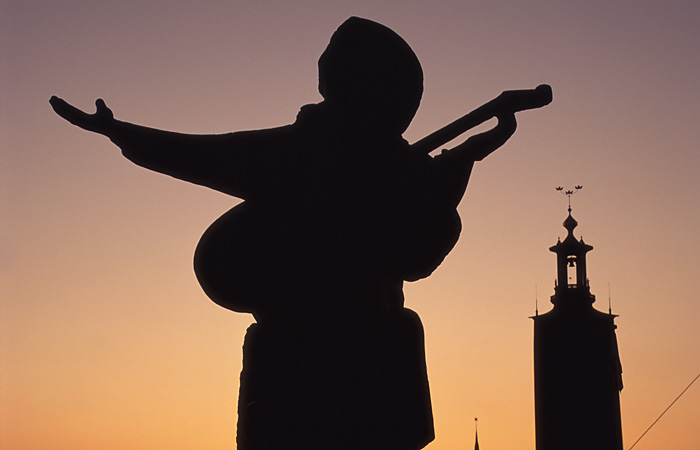 Evert Taube, Gamla Stan Stockholm
Evert Taube, Gamla Stan Stockholm -
Not surprisingly, Scandinavia excels in remarkable sculpture gardens. Millesgården, outside Stockholm immediately comes to mind. And then there’s the Vigeland Sculpture Park in Oslo. The latter may be the most outrageous and fun. One hundred and twenty-one intertwined figures crawling up a 46-foot tall “monolith.” How can you beat that? And all those surrounding figures in strange poses, and with visitors, especially children, interacting with them?
Three-dimensional art is a pretty broad concept so, as long as they’re in the true Scandinavian spirit, why not include an African-inspired glass warrior, or an edible sculpture?
Bo Zaunders -
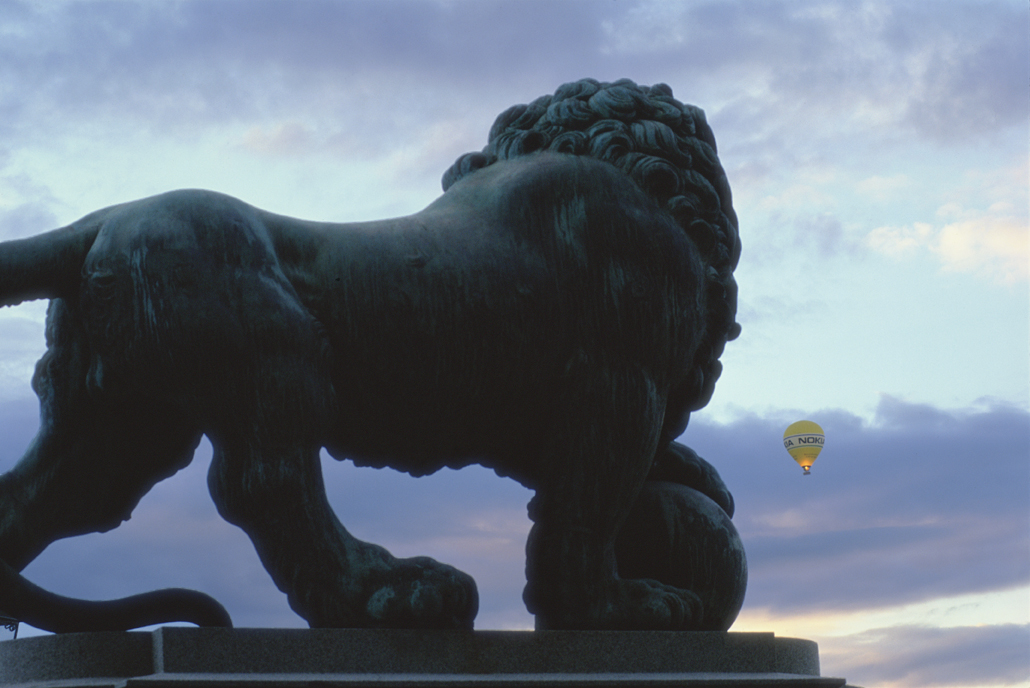 Lejonbacken, Stockholm Castle
Lejonbacken, Stockholm Castle -
The sky is the limit
Many of the works of Carl Milles (1875-1955), Sweden’s perhaps most famous sculptor, depict man’s yearning for freedom, for breaking boundaries. Here, in the “Hand of God,” man is lifted to heaven. This is one of the many sculptures that can be seen in Millesgården, the villa and sculpture garden just outside Stockholm (the original bronze cast is in downtown Detroit – not far from Cranbrook, Michigan, where Milles worked for 21 years). -
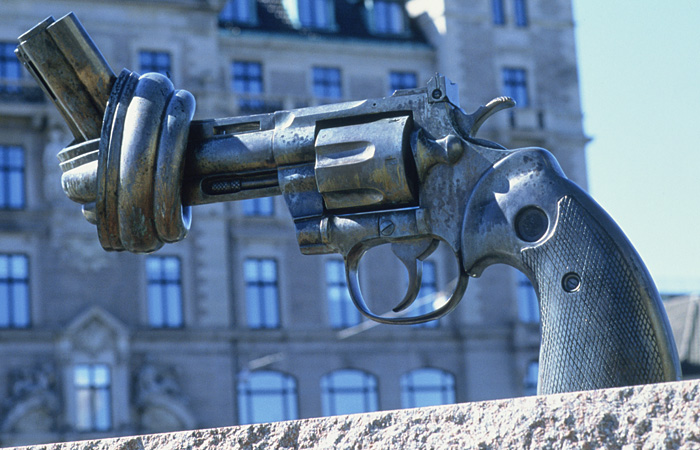 Non-violence statue by Carl Fredrik Reautersvärdh, Malmö, New York and other places.
Non-violence statue by Carl Fredrik Reautersvärdh, Malmö, New York and other places. -
Voodooo in the Kingdom of Glass
In moment of abandon, Kjell Engman, a prominent Swedish glass designer, jumps into one of Småland’s numerous little lakes, posing with what he calls a “Voodoo” sculpture—an African warrior with a polychromatic plume, complete with candy-colored spear. -
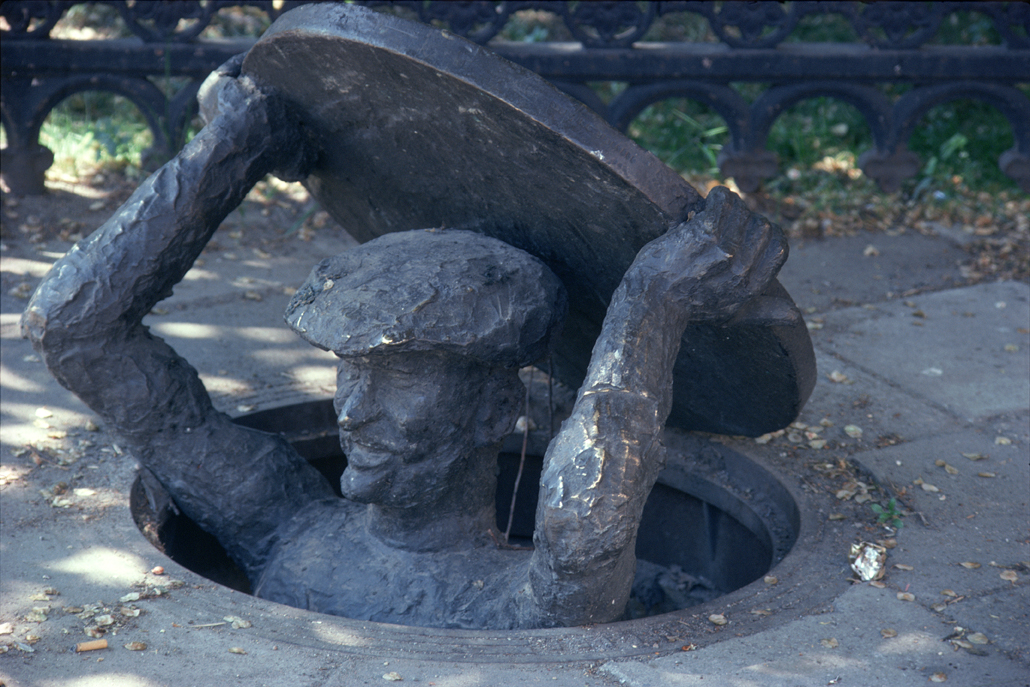 Man in the hole
Man in the hole -
The Swedish troubadour
In songs written over a lifetime, Ewert Taube (1890-1976) sang of his adventures as a young sailor, of the simple but joyous life in the archipelago, and, with more heart and soul than anyone, expressed the love all Swedes have for the Swedish summer. Here in a statue, overlooking Lake Mälaren and City Hall, the old troubadour makes an expansive gesture as if to embrace the shimmering waters surrounding Stockholm’s Old Town. -
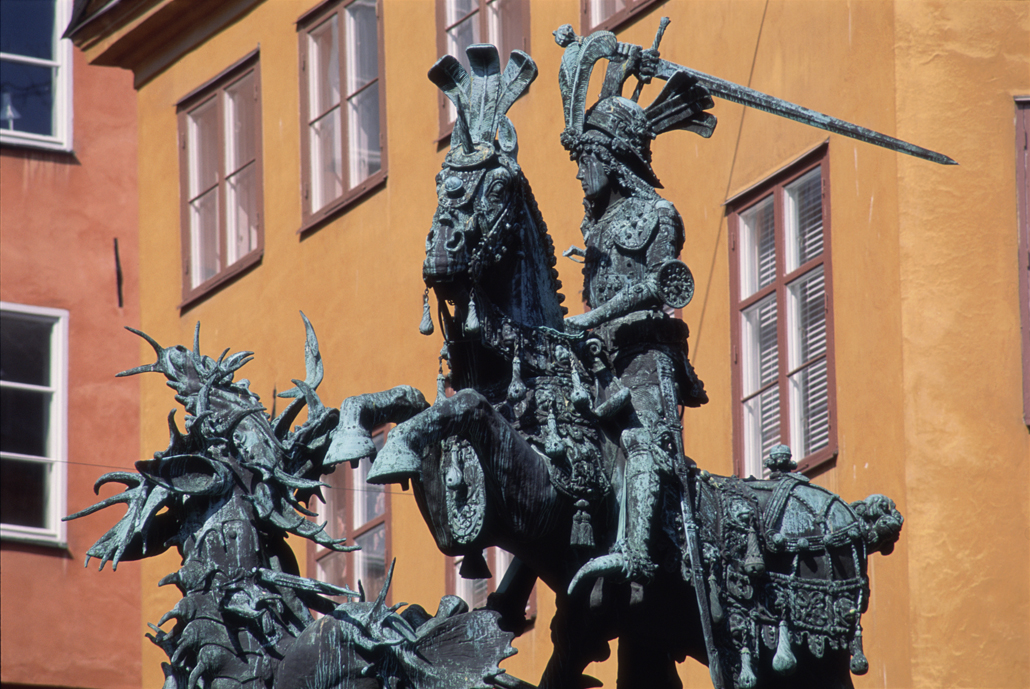
-
Fouquet’s bronze lion
For nearly 300 years, this stout-hearted cat has guarded Stockholm’s Royal Palace from his elevated post on the northern slope. More recently, he has seen a rise in the number of balloons floating above the city. A contemporary with the Montgolfier Brothers, he must feel that nothing much has changed. -
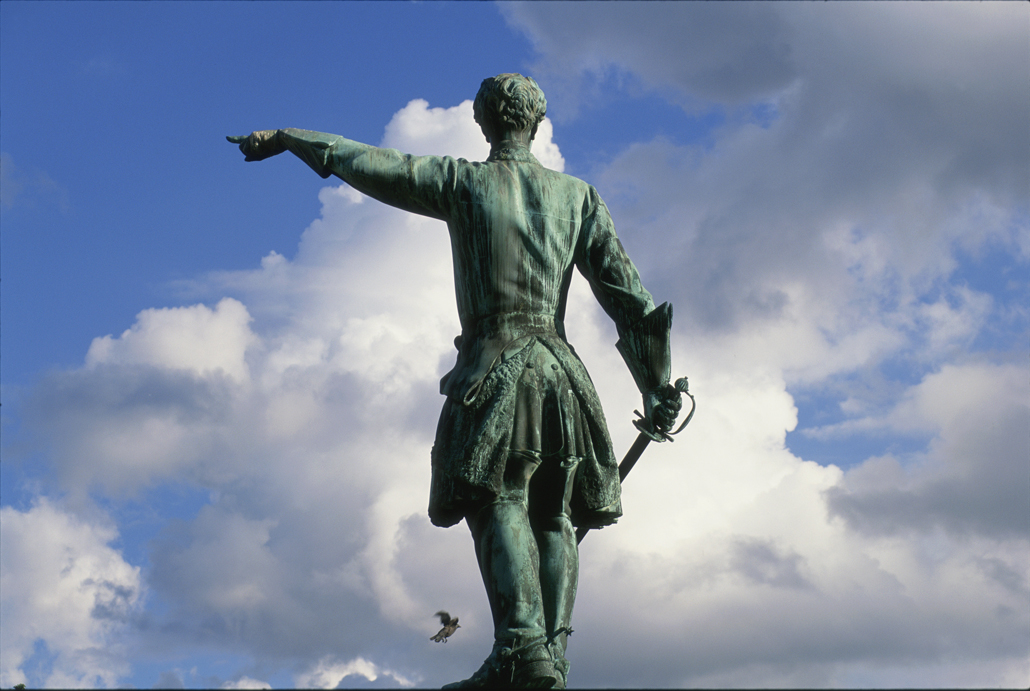
-
The ultimate peace symbol
This refreshingly unusable 45-caliber revolver was photographed near the railroad station in Malmö, Sweden. Also on view at the United Nations in New York City, it was created in 1980 as a peace symbol by the Swedish artist Karl Fredrik Reuterswärd. -
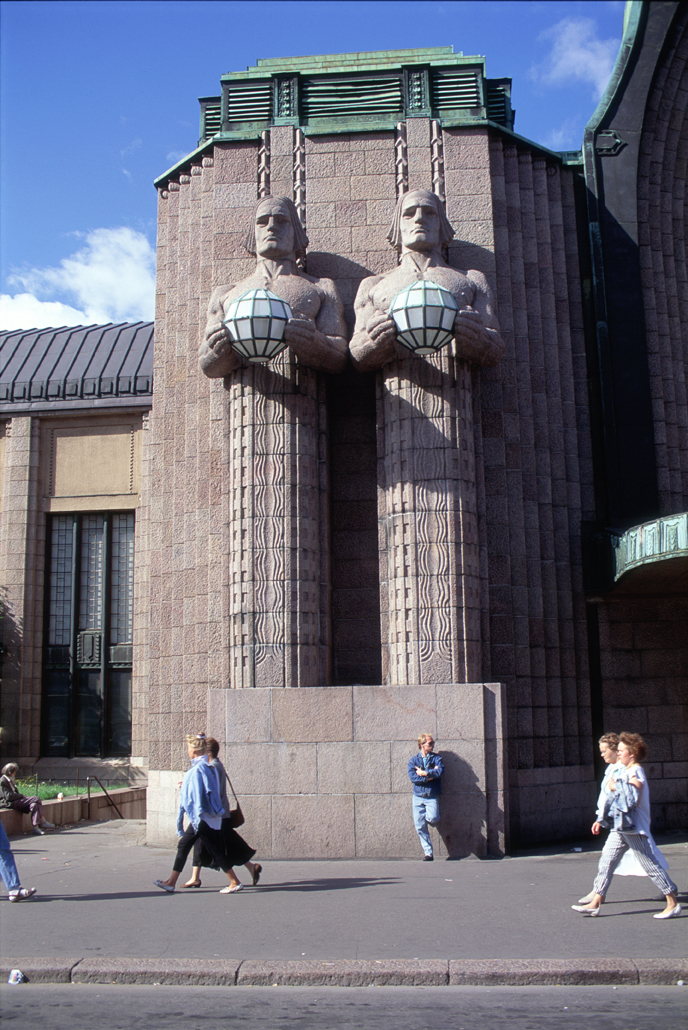 Helsinki Central Station
Helsinki Central Station -
Fooling pedestrians
In 1969, in a magazine contest, the Swedish actor and author Hans Alfredsson, was voted “the funniest person in Sweden.” A year later, his face showed up in this sculpture by K.G. Bejeman. Titled “Humor,” it pops up in a street corner near the Dramaten, the Royal Dramatic Theater, and has for many years startled and delighted passersby. -
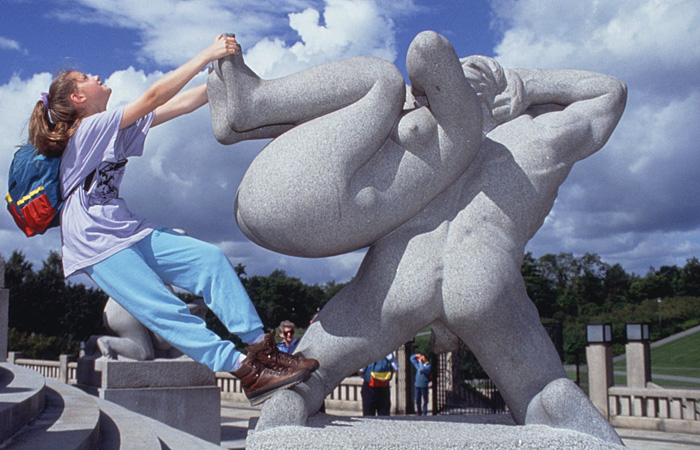 Vigeland Park, Oslo
Vigeland Park, Oslo -
Charles XII
Starting out at age 17, beating the Russians in battle after battle, King Charles XII of Sweden finally met his Waterloo in the Battle of Poltava in 1709. Though losing his Baltic empire to Peter the Great, and impoverishing Sweden through extended military campaigns, he is hailed as a great national hero. This statue in Kungsträdgården in central Stockholm shows him, sword and all, pointing towards Russia. -
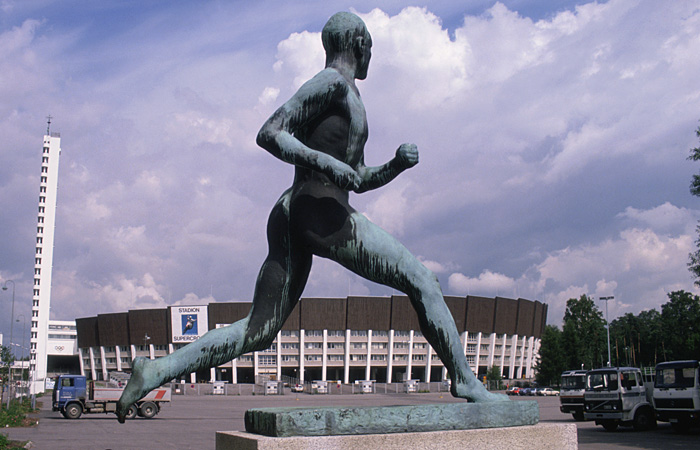 Jorma Nurmi, Finnish runner, Helsinki
Jorma Nurmi, Finnish runner, Helsinki -
St Göran and the dragon
King Sten Sture (St. George) defending Stockholm (the fair princess) against Denmark (the ugly dragon)
Celebrating the Battle of Brunkeberg (1471), in which Sweden defeated Denmark, this statuary, created by the famous Bernt Notke from Lübeck, is by many considered one of the finest works of medieval sculpture in northern Europe. The original, which was carved in oak, painted and gilded, now stands in Storkyrkan in Stockholm’s Old Town. This bronze casting is located at Köpmantorget, just a few short blocks away. -
 The little Mermaid, Copenhagen
The little Mermaid, Copenhagen -
Granite-jawed, grim, and mythic
Isometric and towering, the two lantern keepers guarding the main entrance of the railroad station in Helsinki are hard to miss. They have stood there since 1914, managing to look Egyptian, Teutonic, and Finnish, all at the same time. Legend has it that the sculptor, Emil Wikström, used his muscular gardener for a model. As a member of a Lutheran sect called the Pietists, the gardener wore his hair long, as do the giants. -
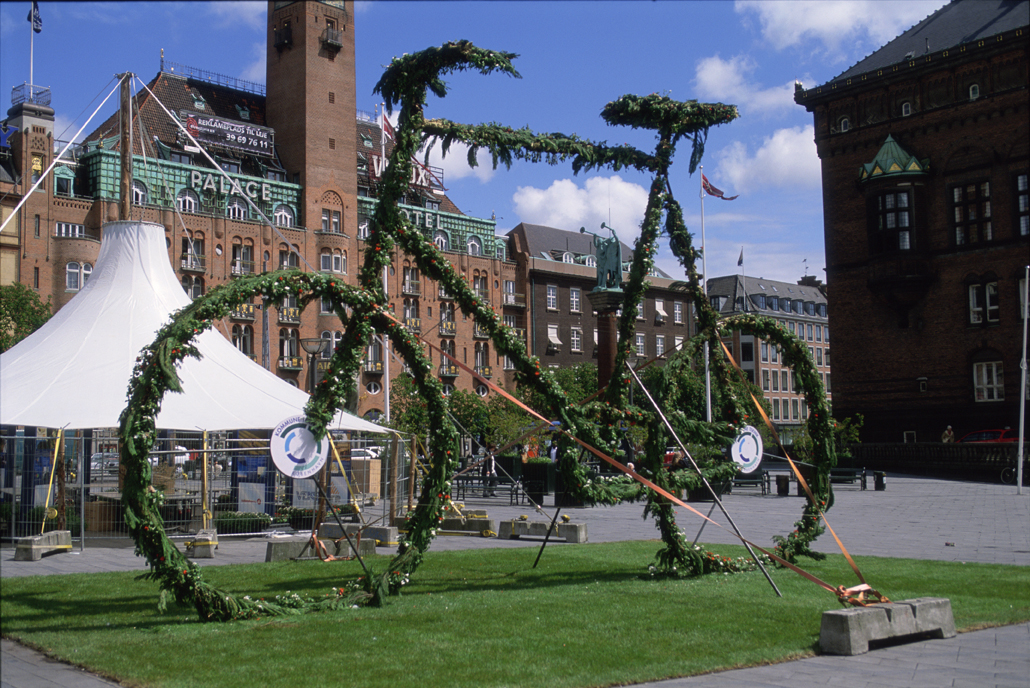 Temporary sculpture in Copenhagen
Temporary sculpture in Copenhagen -
An abundance of poses
Some crawl, others have their legs up in the air. One little boy is stomping his feet and screaming. They are old and young, thin and chubby. They are all part of what their creator, the Norwegian sculptor Gustav Vigeland, titled the “Cycle of Life,” and can be found in the Vigeland Sculpture Park in Oslo. Watching the visitors interact with these groups in granite is part of the fun. Children, especially, add a whole new dimension to the park. -
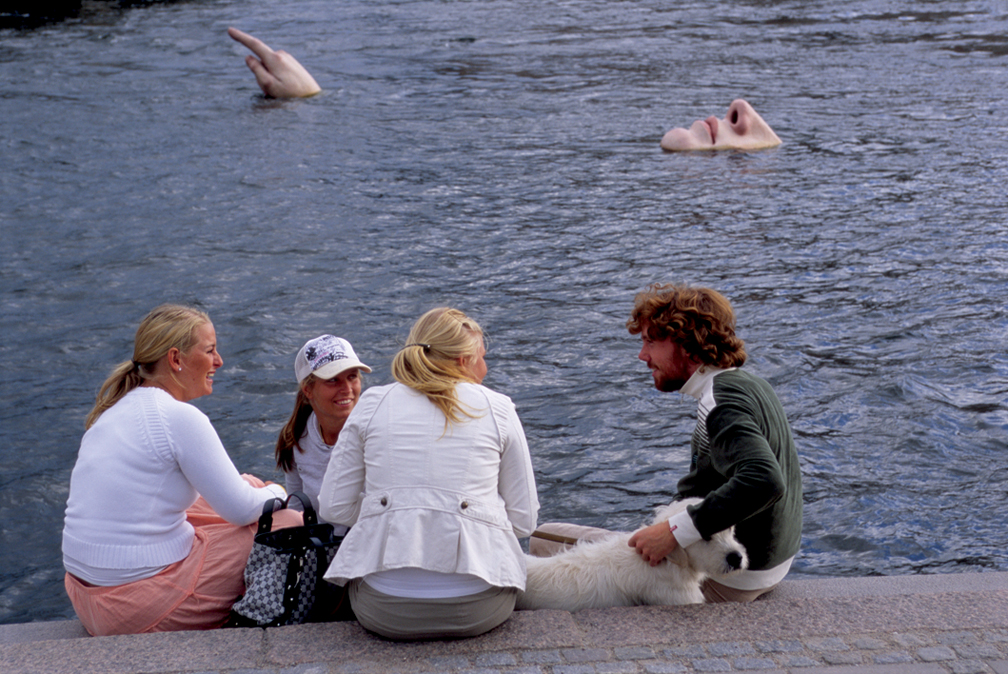
-
Nude Nurmi: the flying Finn
Taking artistic license, Sculptor Wäinö Aaltonen gave dynamic smooth to the movement of Paavo Nurmi, Finland’s legendary long-distance champion of the twenties. Instead of having his hero race the way he did, using the entire length of his soles, Aaltonen made him run lightly on his toes. He also portrayed Nurmi in the nude, a concession to the neoclassical style of the day. In all, Aaltonen made five full-length bronze casts, four of which are placed in various places in Finland. This one, appropriately, is situated in front of the Helsinki Olympic Stadium. -
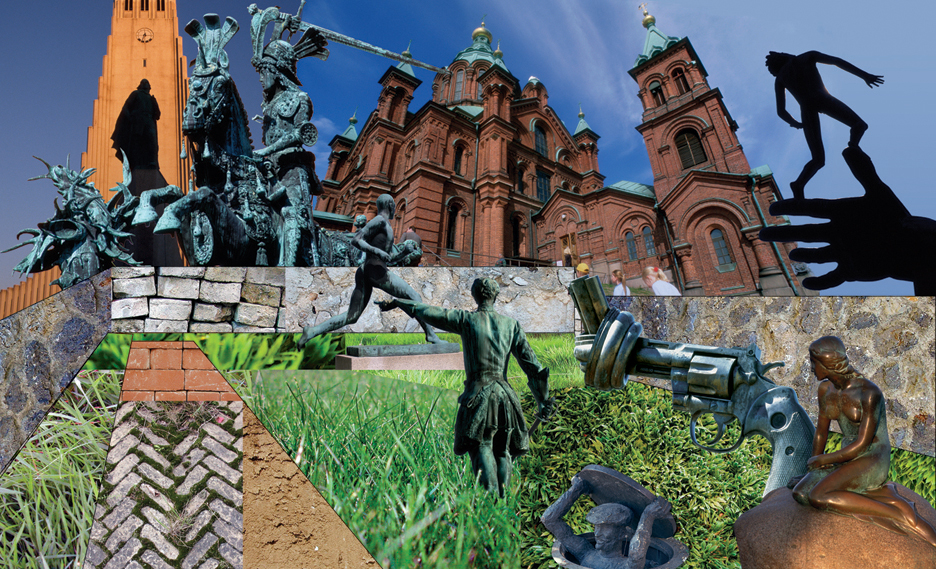 Collage: Holly Gressley
Collage: Holly Gressley -
Venus fit for a king
King Gustav III (1771-92) was the Swedish regent who personified the elegant French style of the 18th century. In the Pillared Hall in the Royal Palace, I found this marble Venus, said to bear a striking resemblance to one of the king’s favorite court ladies. -
First link with America
Here, in silhouette, stands the famous Viking explorer, Leif Ericsson. He discovered North America, and, in gratitude, the U.S. government donated a statue of him to Iceland, his home country. It rises on top of Reykjavik’s highest hill, against the backdrop of Hallgrim’s Church, the sculptural quality of which is even more remarkable. The church was built in the 1930s by State Architect Gudjon Samuelsson, and named after Iceland’s most beloved poet, Rev. Hallgrimur Petursson (1614-1674). -
H. C. Andersen’s little mermaid
She is tiny, only about four feet high. Even so she is a great national symbol, comparable to the Eiffel Tower or the Statue of Liberty. Her story begins in 1909, when Denmark’s big-time brewer and philanthropist, Carl Jacobsen (of Carlsberg fame) saw celebrated ballet dancer Ellen Price in Henriques’ ballet “The Little Mermaid.”
Overwhelmed by her performance, Jacobsen persuaded the ballerina to pose for sculptor Edward Eriksen. She posed—but only from the neck up. For the rest of the body, Eriksen’s wife had to step in.
A few years later, The Little Mermaid sculpture was installed on a granite boulder in the harbor just north of central Copenhagen. Now, more than a million people visit her every year. But like in Andersen’s sad tale, the life of The Little Mermaid has been far from easy. Her arms were cut off by vandals once, and twice, in 1964 and 1998, she lost her head. Fortunately, the original mold exists, so it has always been possible to recast the bronze and weld back any missing body parts. -
Organ pipes for Sibelius
Experts on metallurgy, structural calculations, and welding methods had to be consulted when this—Finland’s first abstract sculpture in a public place—was created by Eila Hiltunen. The monument, intended to be a visual expression of the way the composer Jean Sibelius conveyed mood and atmosphere in his music, caused quite a controversy when it was created in the early 1960s. Finns divided into two camps: modernists who accepted Hiltunen’s abstract approach, and conformists who urged for a figurative solution. A slight compromise was struck when the sculptor, in addition to the 600 stainless steel tubes, added a small bust of the composer. -
Viking troll
Some Scandinavian statuary is not very serious. Getting off the ship in Norway last summer, I was greeted at the harbor by this guy, peering at me from below his oversized helmet. -
Norseman revisited
Transformed into a food sculpture, this Viking is still venturing down a Norwegian fjord, albeit not at the prow of a Longship, but on the dining table of a luxury cruise liner. -
-
